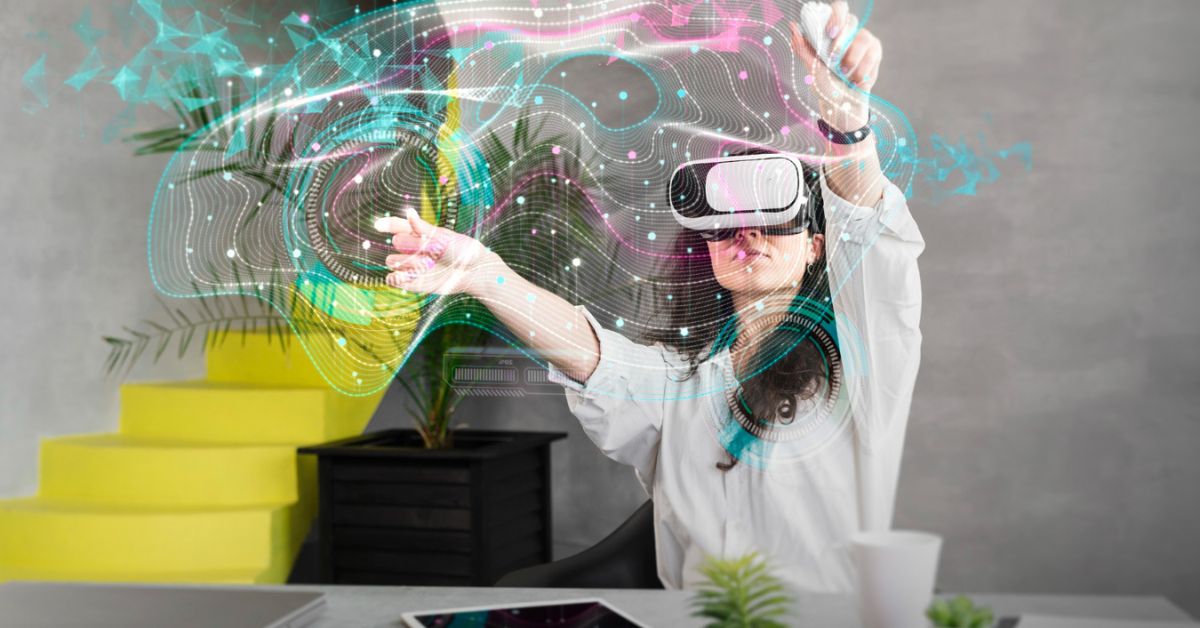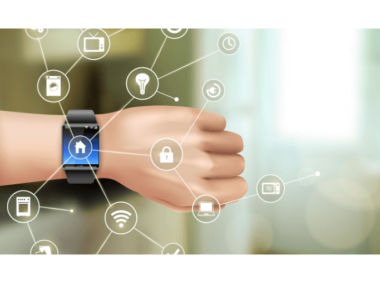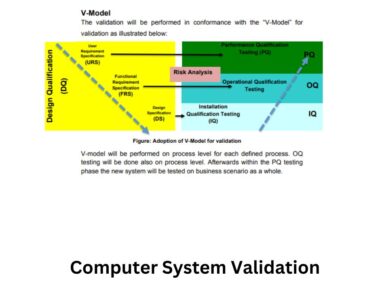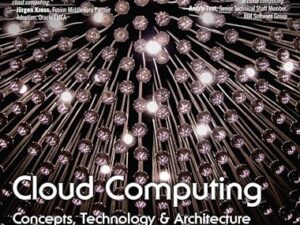Emerging tech trends are always shaping how we live, work, and interact with the world. With the 2023-Current year, we should examine what tech advancements may come.
Also Read
Tech trends, like AI and blockchain, may take off next year.

In 2023,2024 watch for the growth of artificial intelligence (AI). It’s a key tech trend. As AI technology advances, it could revolutionize many industries, from healthcare to transportation.
This includes the rise of “explainable AI.” It aims to make AI systems more transparent and understandable to humans. Another key development in AI is the rise of NLP and conversational AI. They could transform how we interact with machines and devices.
Also, experts expect blockchain tech to grow in popularity in 2023. Blockchain could disrupt many industries, from finance to supply chains.
A promising use of blockchain is in digital identity verification. It could improve security and reduce fraud.
Another area where blockchain should gain traction is decentralized finance (DeFi). It aims to create a more open and accessible financial system.
Table of Contents
Artificial Intelligence and Machine Learning
Artificial Intelligence (AI) and Machine Learning (ML) are two of the most exciting emerging technologies that are set to revolutionize various industries.
In 2023, AI and ML are expected to continue their growth and adoption in various sectors, including healthcare, cybersecurity, and data analysis.
AI in Healthcare
AI is expected to play a significant role in healthcare by improving patient outcomes, reducing costs, and enhancing the overall quality of care.
AI-powered systems can analyze vast amounts of medical data, including patient records, lab results, and imaging studies, to help doctors make more accurate diagnoses and treatment plans.
Some of the key applications of AI in healthcare include:
- Medical Imaging: AI can analyze medical images, such as X-rays, CT scans, and MRI scans, to detect abnormalities and assist radiologists in making more accurate diagnoses.
- Drug Discovery: AI can help researchers discover new drugs and treatments by analyzing vast amounts of data and identifying potential drug candidates.
- Personalized Medicine: AI can analyze a patient’s genetic data, medical history, and other factors to create personalized treatment plans that are tailored to their specific needs.
AI in Cybersecurity
AI is also expected to have a significant impact on cybersecurity by improving threat detection and response. AI-powered systems can analyze vast amounts of data and identify patterns that indicate a potential cyberattack.
This can help security teams respond more quickly and effectively to threats, reducing the risk of a successful attack.
Some of the key applications of AI in cybersecurity include:
- Threat Detection: AI can analyze network traffic, user behavior, and other data to detect potential cyber threats before they can cause damage.
- Automated Response: AI can automatically respond to cyber threats, such as isolating infected machines or blocking suspicious traffic.
- Vulnerability Management: AI can analyze software code and identify potential vulnerabilities that could be exploited by attackers.
Machine Learning in Data Analysis
Machine Learning (ML) is a subset of AI that focuses on teaching algorithms to learn from data and make predictions or decisions based on that data. ML is expected to continue its growth in 2023, particularly in the field of data analysis.
Some of the key applications of ML in data analysis include:
- Predictive Analytics: ML can analyze vast amounts of data and identify patterns that can be used to make predictions about future events or trends.
- Natural Language Processing: ML can analyze text data, such as social media posts or customer reviews, to identify sentiment or extract insights.
- Recommendation Systems: ML can analyze user behavior and preferences to make personalized recommendations, such as products or services that may be of interest to the user.
Overall, AI and ML are set to have a significant impact on various industries in 2023 and beyond. As these technologies continue to evolve and mature, they are expected to become even more powerful and transformative.
Internet of Things

The Internet of Things (IoT) is a rapidly growing network of physical objects that are online, connected, and capable of communicating with each other.
IoT is revolutionizing the way we live and work, and it’s expected to have a major impact on the tech industry in 2023. In this section, we will explore the emerging trends in IoT and how they are expected to shape the future.
IoT in Smart Homes
Smart homes are becoming increasingly popular, and IoT is a key enabler of this trend. IoT devices such as smart thermostats, lighting systems, and security cameras are making homes more convenient, efficient, and secure.
In 2023, we can expect to see even more IoT devices integrated into smart homes, including smart appliances, voice assistants, and home automation systems.
One of the major benefits of IoT in smart homes is energy efficiency. Smart thermostats can learn your habits and adjust the temperature accordingly, reducing energy waste and saving you money on your energy bills.
IoT lighting systems can also be programmed to turn off when you leave a room, reducing unnecessary energy usage.
IoT in Transportation
IoT is also expected to have a major impact on the transportation industry in 2023. Connected cars, trucks, and other vehicles will become more prevalent, providing real-time data on traffic, weather, and road conditions. This data can be used to optimize routes, reduce congestion, and improve safety.
In addition to connected vehicles, IoT will also play a role in smart cities. IoT sensors can be used to monitor traffic flow, air quality, and other environmental factors, providing valuable data for city planners.
This data can be used to make informed decisions about infrastructure, public transportation, and other city services.
Overall, IoT is a rapidly evolving technology that is expected to have a major impact on many industries in 2023. As IoT devices become more prevalent and interconnected, they will provide valuable data that can be used to optimize processes, improve efficiency, and enhance the overall user experience.
Blockchain Technology

Blockchain technology has the potential to revolutionize many industries by enhancing security, transparency, and efficiency. In 2023, it is expected to continue its growth and adoption across various sectors.
Blockchain in Finance
Blockchain technology has already disrupted the financial industry, and its impact is expected to grow even more in 2023.
The use of blockchain in finance can help to reduce fraud, enhance transparency, and improve the speed of transactions. Some of the key trends in blockchain technology in finance include:
- Central Bank Digital Currencies (CBDCs): Many central banks around the world are exploring the possibility of issuing their own digital currencies. CBDCs could help to reduce the cost of transactions and increase financial inclusion.
- Decentralized Finance (DeFi): DeFi is a blockchain-based financial system that operates without intermediaries such as banks or brokerages. DeFi platforms offer a range of financial services, including lending, borrowing, and trading.
- Stablecoins: Stablecoins are cryptocurrencies that are pegged to a stable asset such as the US dollar or gold. They offer the benefits of cryptocurrencies, such as fast and cheap transactions, without the volatility that is often associated with other cryptocurrencies.
Blockchain in Supply Chain
Supply chain management is another area where blockchain technology is expected to make a significant impact in 2023. Blockchain can help to enhance transparency, traceability, and efficiency in the supply chain.
Some of the key trends in blockchain technology in the supply chain include:
- Track and Trace: Blockchain can be used to track and trace products at every stage of the supply chain, from raw materials to finished products. This can help to reduce the risk of fraud and counterfeiting and improve product safety.
- Smart Contracts: Smart contracts are self-executing contracts that are stored on the blockchain. They can be used to automate many aspects of the supply chain, such as payments, shipping, and inventory management.
- Blockchain-enabled Marketplaces: Blockchain-enabled marketplaces can help to connect buyers and sellers directly, reducing the need for intermediaries. This can help to reduce costs and improve efficiency in the supply chain.
In conclusion, blockchain technology is expected to continue its growth and adoption across various sectors in 2023. The use of blockchain in finance and supply chain management can help to enhance security, transparency, and efficiency, and offer new opportunities for innovation.
Augmented Reality and Virtual Reality

As the technology industry continues to evolve, augmented reality (AR) and virtual reality (VR) are emerging as two of the most promising technologies for 2023.
AR in Education
AR technology is already being used in education to improve the learning experience. AR can be used to bring textbooks and other learning materials to life, allowing students to interact with digital content in a more meaningful way.
For example, AR can be used to create 3D models of scientific concepts, enabling students to visualize complex ideas in a more intuitive way. AR can also be used to create interactive maps and timelines, making history and geography lessons more engaging.
VR in Entertainment
Virtual reality (VR) has been primarily associated with gaming and entertainment, but it has the potential to revolutionize the way we consume media. With VR, users can immerse themselves in a fully realized digital world, opening up new possibilities for storytelling and interactive experiences.
VR can be used to create immersive movies and TV shows, allowing viewers to step into the world of their favorite characters. VR can also be used to create interactive experiences, such as virtual amusement parks and theme parks, where users can explore and interact with a digital environment.
Overall, AR and VR are two of the most exciting emerging technologies for 2023, with the potential to transform education, entertainment, and many other industries. As the technology continues to evolve, we can expect to see more innovative use cases and applications emerge in the coming years.
5G Technology
5G technology is one of the most significant emerging trends in information technology for 2023. It is the fifth generation of wireless technology, offering faster data transfer speeds, lower latency, and increased capacity. 5G technology is expected to revolutionize many industries, including telecommunications, healthcare, transportation, and manufacturing.
5G in Telecommunications
In telecommunications, 5G technology is expected to bring significant improvements in speed, capacity, and reliability. With 5G, users can expect to experience faster download and upload speeds, reduced latency, and improved network coverage.
5G technology is also expected to enable new applications and services, such as virtual and augmented reality, smart cities, and autonomous vehicles.
According to predictions from Juniper Research, 5G service revenues will reach $315 billion by 2023. This growth’s primary driver is cellular subscription upgrades to 5G networks, which makes it essential for telecommunication companies to invest in 5G technology.
5G in Remote Work
The COVID-19 pandemic has accelerated the adoption of remote work, making 5G technology more critical than ever. With 5G, remote workers can experience faster and more reliable connections, enabling them to participate in video conferences, access cloud-based applications, and collaborate with colleagues seamlessly.
Verizon chairman and CEO Hans Vestberg explains that 5G technology is likely to reduce “up to 90% of our current power consumption.” 5G may help promote clean energy through the modernization of the electrical grid across the country, which would lead to more efficiency through renewable energy sources.
In conclusion, 5G technology is an emerging trend that will have a significant impact on various industries, including telecommunications and remote work. With faster data transfer speeds, lower latency, and increased capacity, 5G technology is expected to enable new applications and services, making it essential for companies to invest in this technology.
Robotics and Automation
Robotics and automation are two technologies that have been gaining momentum in recent years and are expected to continue to do so in 2023.
These technologies are transforming various industries by increasing efficiency, reducing costs, and improving safety. In this section, we will discuss the emerging trends in robotics and automation in 2023.
Robotics in Manufacturing
Robotics has been a game-changer in the manufacturing industry, and it is expected to continue to be so in 2023. The use of robots in manufacturing has increased significantly in recent years, and this trend is expected to continue.
According to Automation.com, the stock of operational robots around the globe hit a new record of about 3.5 million units, and the value of installations reached an estimated 15.7 billion USD.
One of the emerging trends in robotics in manufacturing is the use of collaborative robots or cobots. Cobots are designed to work alongside humans, performing pick-and-place tasks and other repetitive tasks that are time-consuming and physically demanding.
Cobots are expected to become more prevalent in manufacturing plants in 2023 due to their ability to increase productivity and efficiency while reducing the risk of injury to human workers.
Another trend in robotics in manufacturing is the use of mobile robots or autonomous mobile robots (AMRs). AMRs are used for material handling in warehouses and are designed to navigate autonomously, reducing the need for human intervention.
According to StartUs Insights, the use of AMRs is expected to increase in 2023 due to the growing demand for industrial automation and digitalization.
Automation in E-commerce
Automation is transforming the e-commerce industry by increasing efficiency, reducing costs, and improving customer satisfaction. In 2023, automation is expected to continue to be a major trend in e-commerce. One of the emerging trends in automation in e-commerce is the use of chatbots.
Chatbots are AI-powered software programs that can interact with customers, answer their questions, and provide personalized recommendations. According to CompTIA, we will see more complex versions of chatbots being used in e-commerce in the near future.
Another trend in automation in e-commerce is the use of generative AI and increased focus on explainable AI and ethical considerations. Generative AI is a type of AI that can create new content, such as images, videos, and text.
According to CompTIA, generative AI is expected to become more prevalent in e-commerce in 2023, enabling companies to create more personalized content for their customers.
In conclusion, robotics and automation are two technologies that are transforming various industries, and they are expected to continue to do so in 2023.
The use of cobots and AMRs in manufacturing and chatbots and generative AI in e-commerce are some of the emerging trends in robotics and automation that we can expect to see in 2023.
Emerging Technology Trends in 2024
In 2024, tech is accelerating. New trends are revolutionizing all industries. To stay competitive, we must understand AI, blockchain, and IoT trends. This year, 5G, automation, and AR/VR made great strides. They promise to change how we do business and live our daily lives.
1. AI and Machine Learning (ML) Innovations
AI and ML are reshaping industries, from healthcare to finance. Among 2024’s top innovations are adaptive AI and explainable AI. Adaptive AI learns in real time. Explainable AI improves transparency. Uses include predictive diagnostics in healthcare, better customer service, and AI data analysis. These trends promise efficiency but pose challenges, particularly around ethics and privacy concerns.
2. Blockchain and Decentralized Finance (DeFi)
Blockchain is moving beyond cryptocurrencies. Decentralized Finance (DeFi) and smart contracts are improving financial transparency. Notable applications include asset tokenization and traceable supply chains, enhancing security and accountability. Yet, challenges like regulatory uncertainties and scalability continue to shape its adoption.
3. Internet of Things (IoT) and Smart Homes
IoT technology is connecting industries and homes in new ways. It is improving both industrial operations and personal convenience. 2024’s trends are IoT security, device interoperability, and green energy. Popular applications include industrial IoT for predictive maintenance. Also, smart home devices that enhance daily life.
4. 5G and Networking Advancements
5G networks are enabling faster speeds and lower latency. They are reshaping remote work and connectivity. 5G’s power enables real-time AR/VR apps. It opens new possibilities in e-commerce and telemedicine. 5G infrastructure consumes a lot of energy. This has raised environmental concerns. People are now pushing for more energy-efficient solutions.
5. Augmented Reality (AR) and Virtual Reality (VR)
AR and VR improve user experience in education, retail, and training. In 2024, immersive learning and virtual shopping are gaining traction. VR simulations are now used in medical and vocational training. These technologies boost engagement and realism. However their high costs and access issues are hurdles.
6. Automation and Robotics
Automation in industries is advancing. Collaborative robots, or cobots, now work with humans in healthcare, logistics, and manufacturing. From automated surgical tools to warehouse management systems, robotics enhance productivity. However workforce displacement and ethics are still big challenges to using robots more.
Future Predictions and Conclusion
Looking forward, the future of technology seems bright yet complex. AI, blockchain, and automation are advancing. They promise a more connected, efficient, and innovative world. Businesses and individuals must adapt to these changes in 2024 and beyond. It’s key to staying relevant in a fast-changing world.
Conclusion of Emerging Tech Trends
In conclusion, the emerging tech trends for 2023 are set to revolutionize the way we live, work, and interact with technology. From adaptive AI to green tech, these trends are poised to reshape industries and create new opportunities for growth and innovation.
One of the most exciting trends is adaptive AI, which is making waves in the tech industry. With its ability to constantly improve its understanding of the world, adaptive AI is capable of tackling even the most complex tasks, making it a game-changing technology for businesses and consumers alike.
Green tech is another trend to watch in 2023. As the world becomes more environmentally conscious, companies are investing in sustainable technologies that reduce their carbon footprint and promote a more sustainable future.
From renewable energy sources to eco-friendly products, green tech is poised to transform industries and create new business opportunities.
Blockchain is also set to make a big impact in 2023, with the technology entering its second chapter. As blockchain becomes more widely adopted, it has the potential to transform industries such as finance, healthcare, and logistics, by providing secure and transparent ways to store and share data.
In addition, quantum computing, superapps, and embedded finance are other emerging tech trends to keep an eye on in 2023. As these technologies continue to evolve and mature, they have the potential to reshape industries and create new opportunities for growth and innovation.
Overall, the emerging tech trends for 2023 are exciting and full of potential. By staying up-to-date with these trends, businesses and individuals can stay ahead of the curve and take advantage of the opportunities they present.
Frequently Asked Questions
What are the top emerging technologies for Current Year?
According to industry experts, some of the top emerging technologies for 2023 include Artificial Intelligence (AI) and Machine Learning (ML), 5G, Internet of Things (IoT), Augmented Reality (AR) and Virtual Reality (VR), Blockchain, and Quantum Computing.
What are the booming technology trends in Current Year?
Industry experts predict that the booming technology trends in 2023 will include AI, 5G, IoT, AR and VR, Robotics, and Edge Computing. These technologies are expected to transform various industries, including healthcare, finance, transportation, and manufacturing.
What are the Gartner technology trends for Current Year?
Gartner, a leading research and advisory company, predicts that the top technology trends for 2023 will include Hyperautomation, Multiexperience, Democratization of Expertise, Human Augmentation, and Transparency and Traceability. These trends are expected to have a significant impact on businesses and society.
What are the top 10 technology trends for Current Year?
Industry experts predict that the top 10 technology trends for 2023 will include AI, 5G, IoT, AR and VR, Robotics, Edge Computing, Quantum Computing, Cybersecurity, Cloud Computing, and Digital Twins. These technologies are expected to shape the future of various industries and transform the way we live and work.
What are the latest technologies in the software industry?
The latest technologies in the software industry include Low-code Development Platforms, DevOps, Microservices, Serverless Computing, and Containerization. These technologies are expected to streamline the software development process and improve the efficiency and scalability of software applications.
What is the technology of the year for Current Year?
It is difficult to predict the technology of the year for 2023 as there are many emerging technologies that are expected to have a significant impact on businesses and society. However, AI, 5G, IoT, and AR and VR are some of the technologies that are expected to gain momentum in 2023 and beyond.












